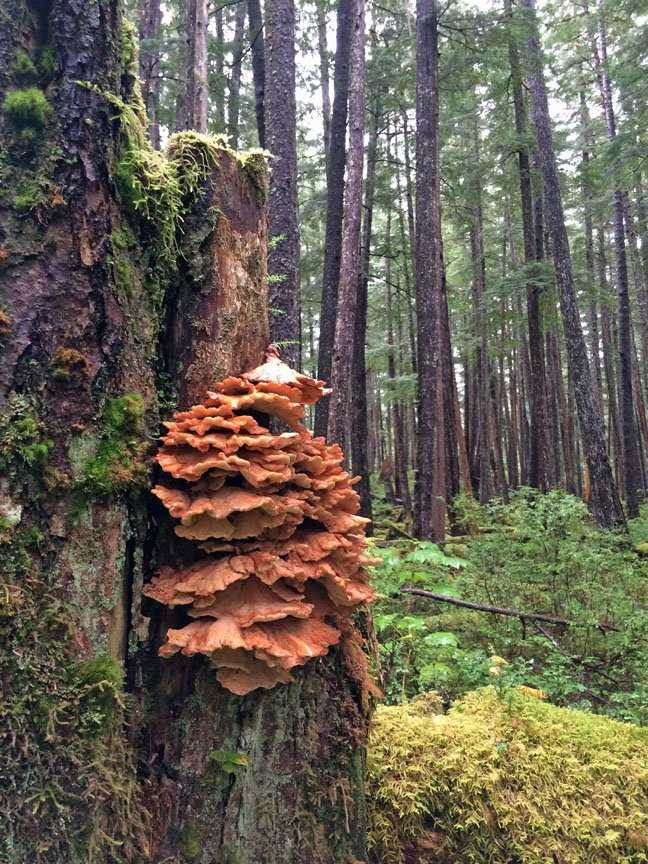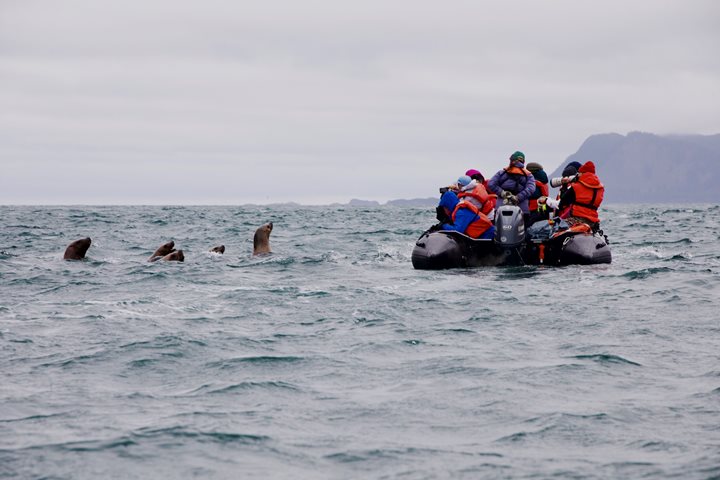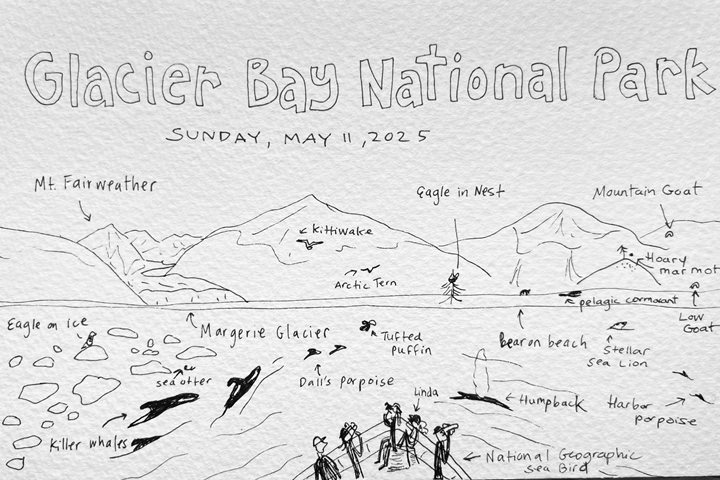We awakened to layers of clouds and 50 degrees Fahrenheit with varying levels of rain, from mist to drizzle to downpour and back to mist again. In other words, typical Southeast Alaskan weather. The National Geographic Sea Lion had traveled north through Chatham Strait into Icy Strait, and tucked into Port Althorp, a beautiful scenic bay off the coast of Chichagof Island. With this as backdrop, half a dozen of us on the back deck took off our shoes and stepped on squishy exercise balls to work with the connective tissue in our feet. About ten minutes into the class, someone spied a critter in the water. Is it a seal? A sea lion? Oh, it’s a sea otter! After oohing and aahing and a couple of photos, our attention refocused on our feet, until another ten minutes later. Look – a bear! A coastal brown bear was foraging on the shoreline. OK, stretch class over. Who can compete with the amazing wildlife here in Southeast Alaska?
After breakfast we shuttled ashore for walks and kayaking. The bear had retreated into the woods by then, yet we were aware that it could be anywhere and, in fact, about an hour later the long walkers had a glimpse of a bear hurrying away from us at a distance through the trees. We saw many other amazing things including eagle feathers, bear tracks, all manner of fungi and lichens, varying shades of greens, browns and grays. We learned about the thriving ecosystem of the temperate rainforest, saw alder and western hemlock and Sitka spruce, watched a red squirrel much on a spruce cone and toss the core onto the top of a huge midden beneath its branch, and saw (and smelled!) salmon in the streams, on the banks and in the forest. Salmon provide nutrients for so many species – and studies have shown that these species – animals as well as trees and plants – are larger near salmon streams as a result. We saw a nearly fully intact salmon deep in the woods, presumably brought there by a bear, which will likely feed a number of animals, and then decay into the soil to provide vital nutrients to the fauna.
We came back onboard for lunch, hot soup and beverages, and dried off just in time to go back out. The ship had repositioned to Hobbit Hole, an anchorage near the Inian Islands. Because this area is near the inlet to the open ocean, it is rich in marine life. We lowered the DIBS for a couple of rounds of cruising to see what wildlife might be around. As the first DIBs were leaving the ship an announcement came from the bridge. Killer whales! DIB drivers went off to view them from that vantage, while the crew weighed anchor and the NG Sea Lion brought the rest of us to watch as well. The killer whales were definitely on a mission, and didn’t stick around long. Cruisers also saw a humpback whale and sea otter during that round. Round two went through South Inian Pass and saw sea lions and sea otters, and got to experience the rushing waters of the ocean inlet, and soaking rains! Back onboard, we are dry once again, and gathering in the lounge for recap and more delicious food prepared by our galley. Another amazingly rich yet typical day in Southeast Alaska.







